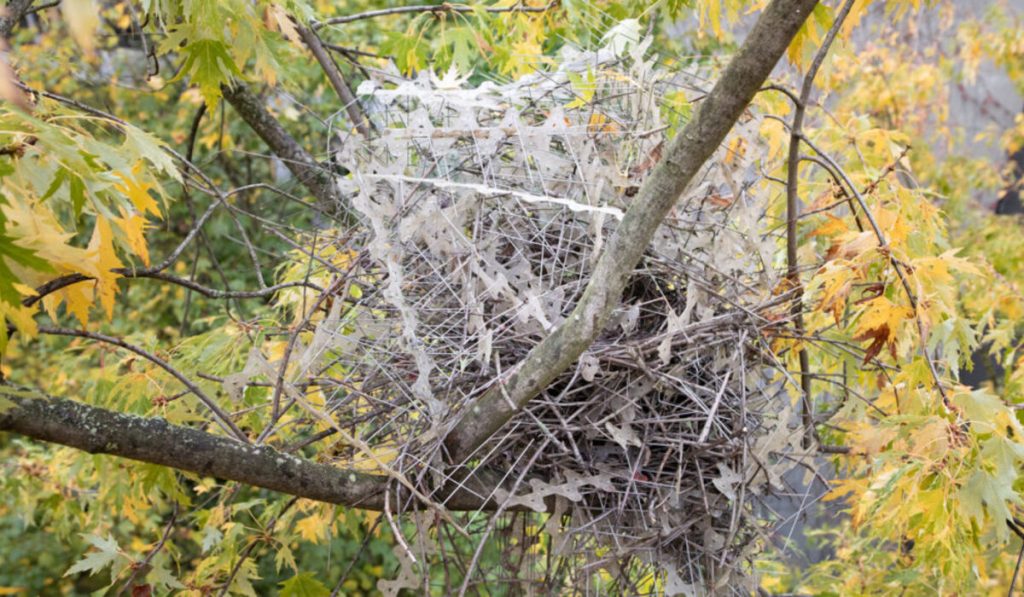Imagine a bird’s nest that resembles something straight out of the thrilling world of Mad Max. It’s a captivating blend of metal, clay, twigs, and plastic. This extraordinary nest was spotted in a sugar maple tree in Antwerp, Belgium. What makes it truly unique is that it brims with over 1,500 long, sharp spikes specifically designed to deter birds. These menacing spikes, typically found on the edges of buildings in cities worldwide, now line the very homes of some birds.
The fascinating discovery began when a patient in an Antwerp hospital glanced out of his window and noticed this extraordinary nest. Intrigued, he captured a picture and sent it to a researcher named Hiemstra.
Hiemstra, who studies nests and plastic pollution at the Naturalis Biodiversity Center in the Netherlands, embarked on a mission to collect the nest after the breeding season. Accompanied by his team, he transported the nest to the lab for further examination. While compiling his report, Hiemstra stumbled upon four more similar nests in cities across the Netherlands and Scotland.
These nests belonged to Eurasian magpies and carrion crows. The crows incorporated the spikes into the structure of their nests, while Hiemstra believes the magpies utilized them for their original purpose: to ward off other birds.
Magpies, being relatively small, construct domed roofs over their nests to protect their eggs and hatchlings from avian predators. In urban environments, finding thorny branches for extra protection becomes challenging. As a result, magpies have resorted to innovative alternatives such as nails, screws, or knitting needles. The ultimate modern replacement comes in the form of antibird spikes.
The researchers find these observations truly captivating. They commend the involvement of citizen scientists in the study. However, a scientist from the University of Warsaw, Zuzanna Jagie??o, who was not part of the research, believes that the paper lacks experiments or on-site observations to conclusively claim that the spikes in magpie nests are used as bird deterrents.
Excitingly, Hiemstra has already received reports of other nests incorporating the spiky material. This suggests that this peculiar construction method may be more prevalent than previously believed. With enough nests to study, he hopes to determine if the spikes genuinely enhance the survival of the young magpies that call these nests home.

